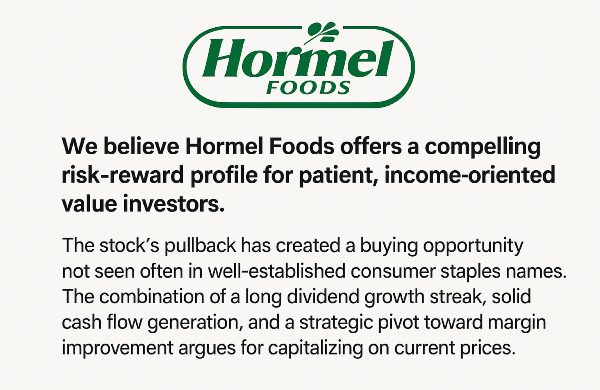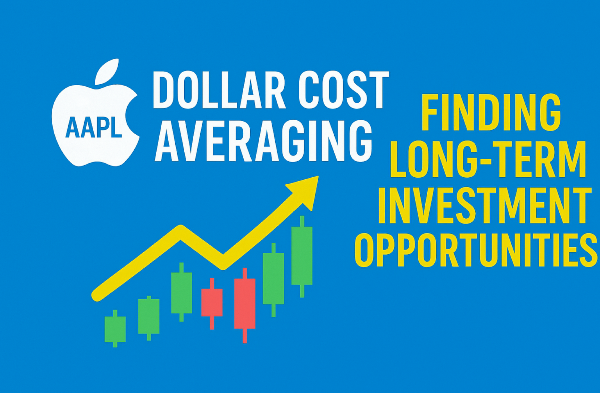It’s not exactly difficult these days to find a company paying a 3–4% dividend yield. Plenty of names come to mind right away. But Extra Space Storage (NYSE: EXR) stands out because it doesn’t just pay a dividend—it has a long track record of consistent growth. And not just modest growth, but really strong, sustained performance over time.
Dividend Growth That Stands Out
Looking at the last five years, EXR has delivered 47% growth—a very strong number for a REIT. And this isn’t just the result of one lucky spike. The company isn’t even trading near its all-time highs right now, yet the long-term trajectory is undeniable.
- Since 2005, the stock is up 1,000%.
- From the 2009 lows, it’s up an incredible 2,000%.
And then there’s the dividend. Pulling up the data on Schwab, you can see how consistently the dividend has grown. Back in 2016—just eight years ago—the dividend payout was half of what it was in 2022 and 2023. That’s a doubling in less than a decade.
In fact, factoring in the extra quarter, the dividend yield is closer to 6.48%. That’s phenomenal growth, and the share price has followed along.
Share Price Performance vs. Inflation
If we zoom out to the 10-year chart, since 2014 the stock is up about 200%. That’s nearly in line with the S&P 500, which is impressive for a REIT.
Now, compare that to inflation. Over the last five years, inflation has been around 27% (depending on sector). EXR has easily outpaced that, while still paying a dividend yield near 4%.
So if you’re building a dividend portfolio that not only keeps up with inflation but actually outpaces it, EXR is one of the better names to consider.
Performance Snapshot
| Metric |
Value/Performance |
| 5-Year Growth |
+47% |
| Since 2005 |
+1,000% |
| Since 2009 Lows |
+2,000% |
| 10-Year Growth (since 2014) |
+200% |
| Dividend Yield (current) |
~4% |
| Dividend Growth (2016–2023) |
Doubled |
| Dividend Yield (factoring extra) |
~6.48% |
Valuation and Risk
Of course, with that kind of run-up, there’s always some risk. REITs are harder to value than traditional companies. You can’t just look at P/E ratios the same way you would with a tech stock. Instead, you often have to weigh dividend yield against future growth potential.
EXR isn’t a small player either. With a market cap of about $35.5 billion, it’s one of the larger REITs out there. It’s also a member of the S&P 500, which adds stability.
The company operates self-storage facilities across 42 states, which gives it a wide footprint. If you’re familiar with Public Storage (PSA), EXR is a close comparison. Personally, EXR looks a little more attractive for the long term.
Analyst Ratings and Market View
Schwab currently gives EXR a C rating. At first glance, that might sound negative, but it actually means they expect it to be in the top 40% of stock performance. And if that’s based on share price alone, that’s a positive sign—because with REITs, investors are usually focused on dividends, not price appreciation.
So if analysts think EXR will also perform well on the share price side, that’s a bonus.
Market Position Snapshot
| Factor |
Assessment |
| Market Cap |
$35.5B |
| S&P 500 Member |
Yes |
| States of Operation |
42 |
| Analyst Rating (Schwab) |
C (Top 40%) |
| Dividend Focus |
Strong |
| Short-Term Upside |
Limited |
| Long-Term Outlook |
Positive |
Competitive Moat and ESG
Now, let’s be honest—self-storage doesn’t exactly have a strong economic moat. There’s no household brand loyalty like you’d see with Apple or Coca-Cola. People don’t say, “I’ve got to get my storage unit from Extra Space.”
That said, land isn’t cheap, and scale does matter. EXR has size on its side, which gives it some advantage. Still, the moat is probably closer to “narrow” than “wide.”
On the ESG side, the company scores fairly low. Depending on your perspective, that may or may not matter. They’ve also missed some earnings recently, but since this isn’t a growth stock, those misses don’t carry the same weight as they would for a tech company.
Valuation Metrics and P/E
Looking at valuation, the P/E ratio is higher than in past years, but that’s largely because of the boom in 2021. Share prices dipped afterward, then rebounded as outlook improved.
For REITs, P/E isn’t the most reliable metric anyway. It’s more useful for growth stocks where earnings expansion drives valuation. With REITs, you’re better off focusing on share price trends and dividend sustainability.
Valuation Snapshot
| Metric |
Trend/Comment |
| P/E Ratio |
Higher than past years (post-2021 boom) |
| Share Price (2021) |
Peaked |
| Share Price (Post-2021) |
Declined, then rebounded |
| Dividend Stability |
Strong |
| Long-Term Growth |
Consistent |
Final Thoughts: Buy, Hold, or Sell?
So where does that leave us? Most analysts lean toward Hold rather than Buy. The stock isn’t undervalued right now, and the short-term upside looks limited.
But if you’re a long-term investor focused on dividends, EXR is still a very attractive option. The dividend growth track record, inflation-beating performance, and large market presence make it a solid portfolio addition.
Verdict: Hold (with long-term Buy potential for dividend-focused investors).
https://youtu.be/s6NfgdQTizo?si=dEydDIjc-gt4_KQd






























It’s not exactly difficult these days to find a company paying a 3–4% dividend yield. Plenty of names come to mind right away. But Extra Space Storage (NYSE: EXR) stands out because it doesn’t just pay a dividend—it has a long track record of consistent growth. And not just modest growth, but really strong, sustained performance over time.
Dividend Growth That Stands Out
Looking at the last five years, EXR has delivered 47% growth—a very strong number for a REIT. And this isn’t just the result of one lucky spike. The company isn’t even trading near its all-time highs right now, yet the long-term trajectory is undeniable.
And then there’s the dividend. Pulling up the data on Schwab, you can see how consistently the dividend has grown. Back in 2016—just eight years ago—the dividend payout was half of what it was in 2022 and 2023. That’s a doubling in less than a decade.
In fact, factoring in the extra quarter, the dividend yield is closer to 6.48%. That’s phenomenal growth, and the share price has followed along.
Share Price Performance vs. Inflation
If we zoom out to the 10-year chart, since 2014 the stock is up about 200%. That’s nearly in line with the S&P 500, which is impressive for a REIT.
Now, compare that to inflation. Over the last five years, inflation has been around 27% (depending on sector). EXR has easily outpaced that, while still paying a dividend yield near 4%.
So if you’re building a dividend portfolio that not only keeps up with inflation but actually outpaces it, EXR is one of the better names to consider.
Performance Snapshot
Valuation and Risk
Of course, with that kind of run-up, there’s always some risk. REITs are harder to value than traditional companies. You can’t just look at P/E ratios the same way you would with a tech stock. Instead, you often have to weigh dividend yield against future growth potential.
EXR isn’t a small player either. With a market cap of about $35.5 billion, it’s one of the larger REITs out there. It’s also a member of the S&P 500, which adds stability.
The company operates self-storage facilities across 42 states, which gives it a wide footprint. If you’re familiar with Public Storage (PSA), EXR is a close comparison. Personally, EXR looks a little more attractive for the long term.
Analyst Ratings and Market View
Schwab currently gives EXR a C rating. At first glance, that might sound negative, but it actually means they expect it to be in the top 40% of stock performance. And if that’s based on share price alone, that’s a positive sign—because with REITs, investors are usually focused on dividends, not price appreciation.
So if analysts think EXR will also perform well on the share price side, that’s a bonus.
Market Position Snapshot
Competitive Moat and ESG
Now, let’s be honest—self-storage doesn’t exactly have a strong economic moat. There’s no household brand loyalty like you’d see with Apple or Coca-Cola. People don’t say, “I’ve got to get my storage unit from Extra Space.”
That said, land isn’t cheap, and scale does matter. EXR has size on its side, which gives it some advantage. Still, the moat is probably closer to “narrow” than “wide.”
On the ESG side, the company scores fairly low. Depending on your perspective, that may or may not matter. They’ve also missed some earnings recently, but since this isn’t a growth stock, those misses don’t carry the same weight as they would for a tech company.
Valuation Metrics and P/E
Looking at valuation, the P/E ratio is higher than in past years, but that’s largely because of the boom in 2021. Share prices dipped afterward, then rebounded as outlook improved.
For REITs, P/E isn’t the most reliable metric anyway. It’s more useful for growth stocks where earnings expansion drives valuation. With REITs, you’re better off focusing on share price trends and dividend sustainability.
Valuation Snapshot
Final Thoughts: Buy, Hold, or Sell?
So where does that leave us? Most analysts lean toward Hold rather than Buy. The stock isn’t undervalued right now, and the short-term upside looks limited.
But if you’re a long-term investor focused on dividends, EXR is still a very attractive option. The dividend growth track record, inflation-beating performance, and large market presence make it a solid portfolio addition.
Verdict: Hold (with long-term Buy potential for dividend-focused investors).
https://youtu.be/s6NfgdQTizo?si=dEydDIjc-gt4_KQd